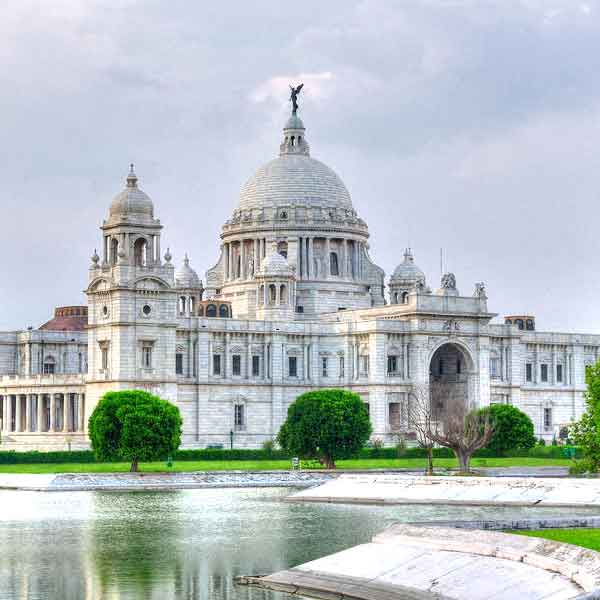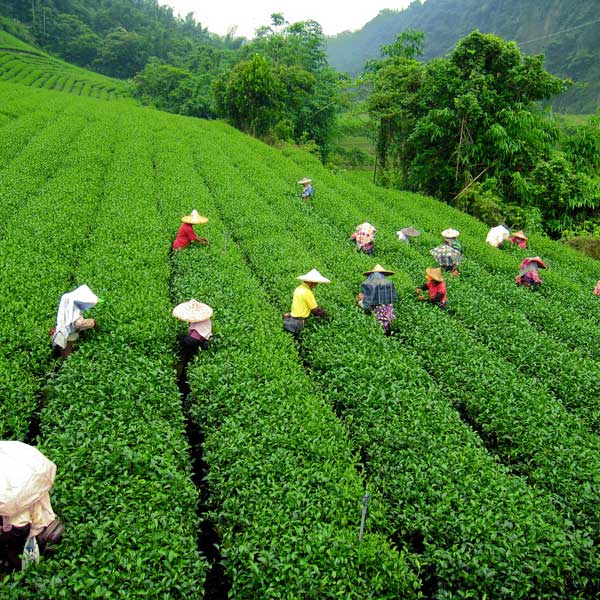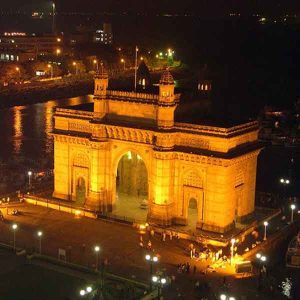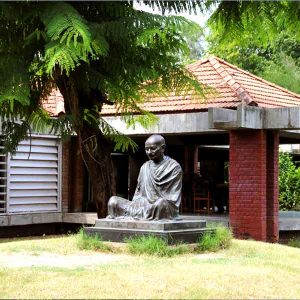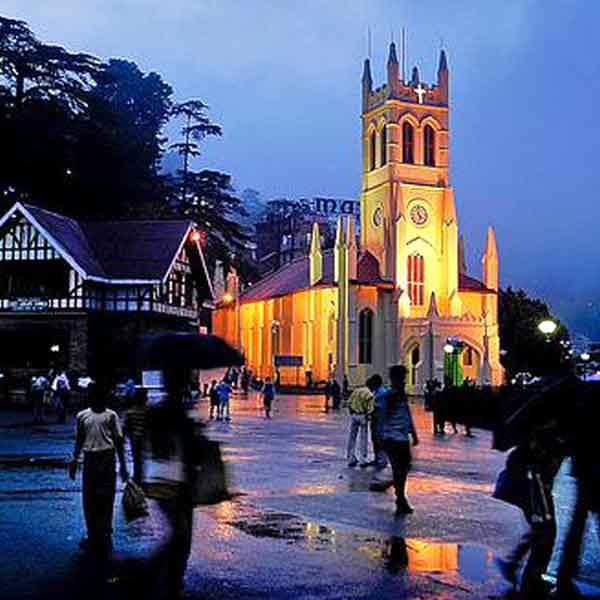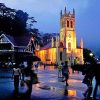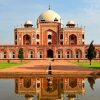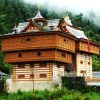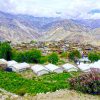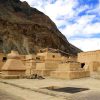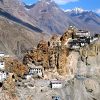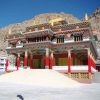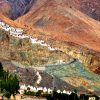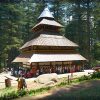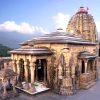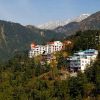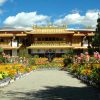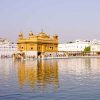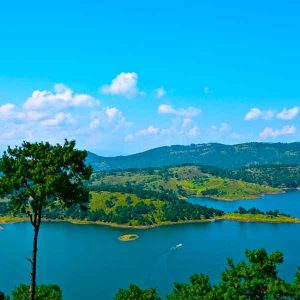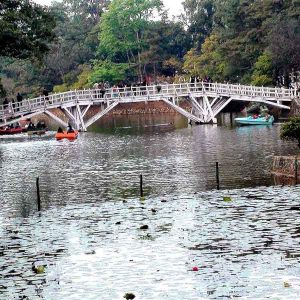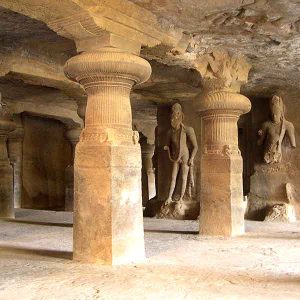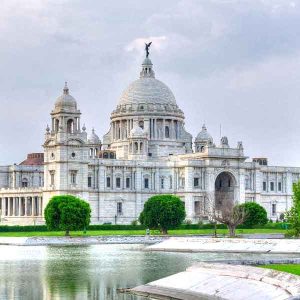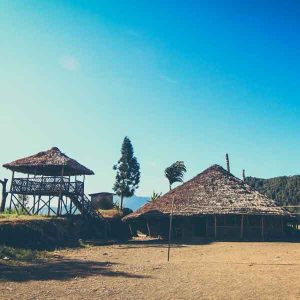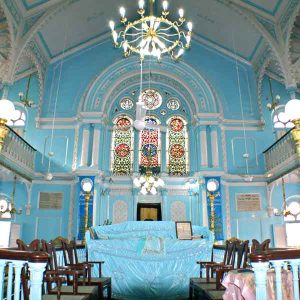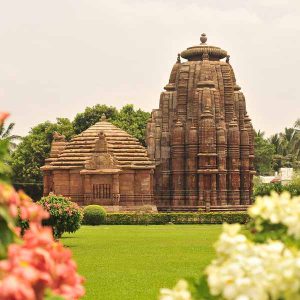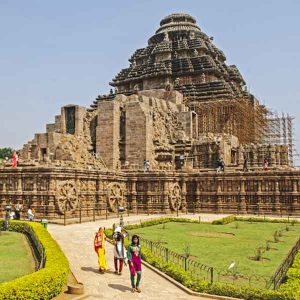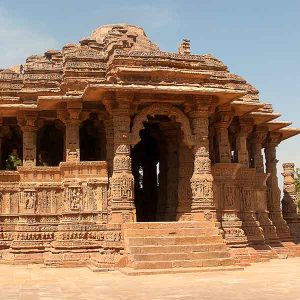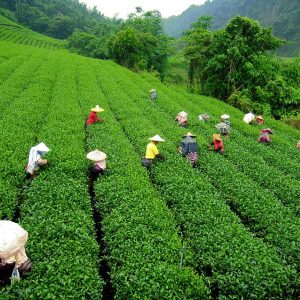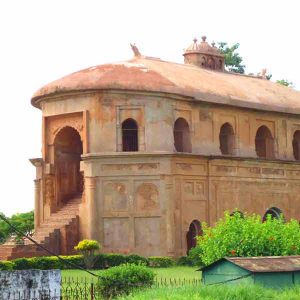Day 01: Arrival in Delhi.
Early morning arrival in Delhi followed by transfer to the hotel. Morning: rest and recuperate from long flight. Those with energy can take a stroll around the area near the hotel which boasts cafes, bookstores, and local bazaars. Afternoon: sightseeing of Old & New Delhi including a rickshaw ride through the old Chandi Chowk bazaar. Overnight in Delhi.
Day 02: Delhi to Shimla via Chandigarh.
Transfer to the train station for the Shatabdi Express to Chandigarh. From Chandigarh drive to Shimla. Lunch will be enroute. On arrival in Shimla, transfer to the hotel. Rest of afternoon/evening free on the mall. Overnight in Shimla.
Day 03: Shimla to Sarahan (174 km/7 hrs).
Early morning breakfast, drive to the base of Jhaku (Hanuman)Temple. It is a short 15 minute climb uphill on well laid-out steps to the temple. We then drive to Sarahan, a beautiful village surrounded by apple orchards and dominated by Shrikhand Mahadev Peak (5155 M/ 16,912 feet) which resembles the “Shivling.” On arrival transfer to the hotel.
We visit the Bhimakali Temple, a wonderful mixture of Buddhist and Hindu architecture. It is very sacred to both communities. The Bhimakali goddess idol is approximately 200 years old. Overnight in Sarahan.
Day 04: Sarahan to Sangla (82 km/2 hrs).
Sangla Valley, also known as Baspa Valley, is by far the most beautiful valley of Himachal Pradesh, full of wooded slopes and surrounded by green fields and high mountain peaks as far away as Chitkul, the last inhabited village in this valley. After settling into our deluxe camp, walk across a small foot bridge to the enchanting village of Bisteri. Overnight in Sangla.
Day 05: Sangla to Kalpa (40 km/2 hrs).
Drive to Kalpa. Enroute visit Rakcham and Kamru villages in the Sangla Valley. Looming above Kalpa village is the impressive Mt. Kinner Kailash (6050 M/ 19,850 feet). Arrive in time for lunch.
Afternoon: walk the Old Hindustan Road to Roghi Village. Overnight at a beautiful hotel, situated at the base of Mt. Kinner Kailash. Overnight in Kalpa.
Day 06: Kalpa.
Full day walking tour to the ancient and exquisite villages of Chitkul, Chini, Peo, Kothi, Pangi and Telangi. Overnight in Kalpa.
Day 07: Kalpa to Nako.
Visit to Nako subject to road connectivity, otherwise we drive from Kalpa direct to Tabo.
The village of Nako lies at an altitude of 3625 meters (11,893 feet), high above the last stretch of the Spiti Valley. It was once a very important center of Buddhism in the region. There are at least seven temples belonging to different periods between the 11th and 12th centuries distributed all over the village, including a monastic complex on its western edge. Boasting four temples and a number of additional buildings, this complex preserves the earliest artistic heritage. The austere and unornamented exteriors of the buildings give little hint of the important artistic and religious legacy that lies within the walls. Overnight in Camp.
Day 08: Nako to Tabo (69 km/2-3 hrs).
Today we enter the Spiti Valley. Geographically and archeologically, Spiti is a living museum. The mountains are devoid of any vegetation due to erosion by wind, sun and snow over thousands of years.
Our vehicles climb up to the village of Tabo (3050 M/ 10,006 feet). Built in the year 996 AD, the Chos Khor Monastery at Tabo is the largest monastery in Spiti and one of the few remaining examples of the Golden Period of Buddhist Culture in the Himalayan Region. The wall frescos of the monastery are comparable in their antiquity and quality to those of the Ajanta caves, hence they are called the Ajanta of the Himalayas. It houses more than 100 Lamas, a large number of scriptures and pieces of art, wall paintings, tankhas and stucco. This monastery follows the Dalai Lama’s sect of Buddhism. We will reach Tabo for lunch. In the afternoon and evening we will visit the Monastery and village. Overnight in Tabo.
Day 09: Tabo. Excursion to Lhalung & Dhankar (74 km).
Rise early if you want to join the monks in morning puja (worship) at Tabo monastery (5 min walk through the village).
We drive to Lhalung which is 14 km (9 miles) from the main road in Lingthi Valley. It is a magnificent village of 45 houses. In this village stands the second most interesting monastery of Spiti. The compound consists of five buildings. At some spots fragmentary remains of a wall encircling all the buildings can be found. The monastic site of Lhalung once consisted of nine temples. Together with the unusually rich interior of Lhalung’s main chapel and the fact that the building of the temples is also attributed to Rinchen Zangpo, it may suggest that the temple site of Lhalung, like Tabo, was designed as a Chokhor site, a place for learning and debate as opposed to a simple chapel for worship by the local people.
We drive onward to Dhankar, the ancient capital of Spiti. Dhankar Gompa (3800 M/ 12,467 feet) was built in the 12th century. This hilltop fort dominates the scene, and once served as a jail. It contains more than 160 scriptures of Lamas and Buddhists in the Bhoti language. A statue of Dhyan Buddha consisting of four complete figures seated back to back is the main attraction of this four to five century-old monastery. Unfortunately, the ancient Gompa, situated on the very edge of the peak, is deteriorating. Entering the interior may be restricted in the very near future. They have shifted the main monastery to a new complex at the entrance of the village. His Holiness the Dalai Lama inaugurated this temple in June 2004. Return to Tabo for overnight.
Day 10: Tabo to Kaza via Mane & Pin.
Full day visit to the village and monastery of Mane, then a drive to the Pin Valley National Park. Afternoon: free to explore the valley for wildlife. Mane is just 4 km west of the Pin River and situated at a height of 3700 M (12,140 feet). There is a small village full of green fields and a beautiful gompa built in the 14th century by the Geluk-pa-sect. Ancient paintings and statues of Avalokitesvara and Sakyamuni are are very impressive. The view from the village is breathtaking, with the valleys of Tabo and Kaza on either side. Overnight stay in a retreat in Kaza.
Day 11: Kaza. Excursion to Ki, Kibber & Gete.
Visit the ancient Ki and Kibber Gompas (Monastries) and the village of Gete, which are among the highest inhabited villages in the world. Ki is the biggest monastery in Spiti Valley. Situated between Kaza and Kibber, it dominates the Ki village and the Spiti Valley. Ki Monastery (4116M) is a Gelugpa sect monastery. Its hilltop position points to a post-thirteenth century construction. The greatest wealth of Ki Gompa lies in its collection of ‘Thangkas’ salvaged with difficulty from the devastating raids of the Dogras and the Sikhs in the 19th century.
From Ki, a scenic drive takes you to Kibber, a small village. From Kibber, the pastures are spread over hundred of square kilometers. Kibber is the take off point for the popular trek to Tso Moriri in Ladakh. Kibber also falls on the old route used over centuries by traders from trans-Himalayas to reach Spiti for an annual fair where traders from Spiti, Kinnaur, Ladakh and Tibet use to participate in.
Further up, six kilometers from Kibber, we drive up to a still smaller village of Gete. Consisting of just six houses, it boasts of being the highest village in Asia connected by road. The view from here of the whole Spiti valley is truly spectacular. Return to Kaza for overnight stay.
Day 12: Kaza to Manali via Kunzum & Rohtang Pass (209 km/9 hrs).
Morning drive over the famous Kunzum Pass, enroute visit Lahaul Valley, between Kunzum and Rohtang. The drive offers magnificent views. Continue to Manali over Rohtang La (3980 M/ 13,058 feet). At Rohtang Pass we relax and enjoy the breath-taking beauty; optional guided horse ride up the mountain. Overnight in a resort in Manali.
Day 13: Manali and around.
Explore the picturesque Valley of Gods at Manali and Nagar. An easy day of strolling around Manali. Visit Dhungri Temple (also known as Hadimba Temple by locals) and the quaint village of Nagar with its many ancient temples, including the 11th-12th century Temple Gauri and the Tripura Sundri Devi Temple. Overnight in Manali.
Day 14: Manali to Palampur via Kullu (180 km/6 to 7 hrs).
Drive through Kullu to Kangra – the Valley of Temples. We visit the most ancient / oldest existing Shiva temples at Baijnath. Overnight in Taragarh Palace in Palampur.
Day 15: Taragarh. Excursion to Bir and Baijnath.
We start with a visit to Bir, a predominantly Buddhist town with some nice new monasteries. Just below the village, a road to the west leads to a tiny Tibetan settlement with a fine gompa which belongs to the Nyingmapa order of Tibetan Buddhism. It is a beautiful and peaceful location. The monks, who are not accustomed to visitors, are very friendly. Many peaks between 3500M – 5000M (11,483 – 16,404 feet) of the Dhauladhar are clearly visible from here.
Baijnath (5 Km) is a pleasant little town surrounded by tea plantations and the Daula Dhar range. This village houses the oldest existing Shiva temple. Just below the village is the Tashijong Gompa, which is the focus of a small Tibetan community who hail from Kham province in Tibet. This fine gompa also belongs to the Nyingmapa order of Tibetan Buddhism. We will visit the Sherabilling monastery and hear the award-winning chants of the monks (2003 GRAMMY Award Winner for Best Traditional World Music Album). Sherab Ling Monastery is nestled in the gentle pine-forested foothills of northern India’s Kangra Valley, the seat of its founder His Eminence Ti Situpa XII, a leading Tibetan Buddhist teacher and peace campaigner. Here the monks perform prayer ceremonies as part of their daily lives, originating many centuries ago in the great Buddhists monasteries of Tibet. The monks begin their day with the Lineage Prayer, offering respect to a line of great meditation practitioners going back as far as the 7th century. The Mahakala Ceremony is part of each day’s closing ritual in which the monks ask for purification and dedicate their blessings to all sentient creatures. We will attend the evening chants beginning at approximately 3 pm. Overnight in Taragarh.
Day 16: Taragarh to Dharamsala (McLeod Ganj) via Norbulingka ( 40 km/1 hr).
Enroute we visit the institute of Tibetan Arts and Handicrafts in Norbulingka. Upon arrival, we visit the center of Tibetan Medicines and Astrology, time permitting. Afternoon: attend puja at the Karma Pa monastery. Evening: you are free to explore the Tibetan Markets. Overnight in a resort in Dharamsala.
Day 17: Dharamsala to Amritsar (175 km/5 hrs).
Early morning (6 am) walk to the Dalai Lama’s monastery to attend the monks’ puja; afterwards circumambulate the monastery complex along with the locals. Return to hotel for breakfast.
After breakfast, drive to Amritsar, in the state of Punjab, in the Himalayan foothills called the Shivaliks. Amritsar, home of the Golden Temple, is one of the most ancient and fascinating cities in India. It is an important seat of Sikh history and culture. Being the gateway for travelers coming to India on the overland route from Central Asia, it soon became the center of various commercial activities. The Golden Temple was founded by the fourth Guru of the Sikhs, Guru Ramdas, and completed by his successor Guru Arjan Dev. It is famous for its full golden dome, one of the most sacred pilgrim sites for Sikhs. The Mandir is built on a 67-foot square of marble and is a two-storied structure. Maharaja Ranjit Singh had the upper half of the building adorned with approximately 400 kg of gold leaf. The Golden Temple is surrounded by a number of other temples, such as the Durgiana Temple.
After lunch we visit the Golden Temple of the Sikhs. We will circumambulate the temple, stopping periodically for moments of quiet reflection. The temple complex is like a small community, filled with many different activities. We will visit the kitchen where free meals are prepared by volunteers throughout the day; the temple where the holy book, AadI Guru Granth Sahib, is read aloud from 4 am to 10 pm daily; and observe devotional rituals.
Travel to the border town Wagah to see flag ceremony at dusk. We return to the temple in the evening for the closing ceremony. Overnight in a hotel in Amritsar.
Day 18: Amritsar to Delhi. Depart Delhi.
Morning independent. Transfer to airport for flight to Delhi. Transfer to a hotel close to the airport with shared rooms for wash, change. Dinner and late night transfer to airport for flight to onward destination.
Date and price to suit individual arrangements based on 2 people sharing. Breakfast included. Private air-conditioned car and driver with English speaking guides for sightseeing.

